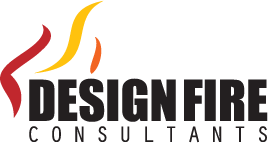
An Ever-Changing World: The Role of the Fire Engineer
Co-authors by: Roy Little, Associate Director and Francesca Ravenhill, Associate
Understanding the Context
In the wake of the Grenfell Tower Inquiry, the landscape of fire engineering has transformed significantly. As professionals in this vital field, we find ourselves at a crucial juncture, facing both challenges and opportunities. This blog seeks to explore the evolving responsibilities of the fire engineer and how we can adapt to foster a positive impact on our industry and society.
The Changing Role of the Fire Engineer
The past seven years have witnessed numerous changes in our industry. However, as we continue to work through the Grenfell Tower Inquiry reports, the government response to the recommendations, review relevant legislation and attempt to understand the future role of the fire engineer, we are left with more questions than answers.
It appears that fire engineers today must be more than just technical experts. We need to understand the social and environmental context within which we operate; we need to interpret the meaning and intent of legislation; we must be clear communicators, educators, and so much more.
There are new systems to navigate, new qualifications to pursue and a continuous challenge to our competence to address within the context of fire safety assessments and regulations.
The more we read and discuss with others, the more we swing from hope and optimism, to frustration and exasperation.
Navigating Regulatory Disparities
The newly established Building Safety Regulator (BSR) is responsible for overseeing the changes to the safety and performance of all buildings, as well as raising professional standards within the industry. A recent job advertisement for a BSR Lead stipulated that the candidates are required to possess a minimum Level 5 qualification in any subject.
In contrast, the Institute of Fire Engineers (IFE) requires that the fire engineer hold academic qualifications (bachelor’s or master’s degree) accredited by the Engineering Council, alongside years of demonstrated experience and competence, relevant logged CPD, and the completion of an interview to attain Chartership. This will soon be followed by a secondary Chartership for those working on Higher-Risk Buildings (HRB), namely CEng HRB.
This disparity seems quite pronounced and raises questions about the standards of fire safety advice being offered across the industry.
Interpreting Complex Fire Safety Legislation
Over the years there has been government issued guidance, guidance that has later been withdrawn, guidance which has been overturned in the courts, and in some cases no guidance has been issued. It is within this environment that the fire engineer is expected to read, understand and correctly apply the law.
Having read some of the new (and existing) legislation, while engaging in discussions with a legal expert, it was advised, “You have to be able to distinguish between understanding the legislation, the understanding behind the legislation, and the possible effects of the legislation.” It was also noted that “Everyone has an opinion on each aspect.”
The possible implications of legislation are the most challenging for the fire engineer to navigate. Like many matters, implementation is paramount and requires trust in the lawmakers to have exercised foresight in establishing the systems to support that which is being implemented.
As an industry, this seems to be where we are. As we piece together all the pieces of legislation – both new and old – they seem to fit together. They push people to do the right things. Things they should always have been doing.
We believe in the functional approach to fire safety design and support the intention of the new legislation to force the engineer to demonstrate and document their design approach. Others may seek prescriptive legislation; however, this brings greater potential dangers. Those drafting such regulations better be right, for this approach removes the safeguard afforded by the fire engineer and diminishes the capacity of competent professionals to influence design.
We believe that the existing systems will be strong enough to survive (after all, we stand on the shoulder of giants) and the real battle to come will be in how we choose to implement and operate within them.
A Call to Action
Most of the changes are currently aimed at the residential market, yet it would be naïve to believe that similar issues do not exist across all building types, and that change won’t come to other areas too.
We are excited to see how the new fire safety legislation unfolds, how the recommendations from Grenfell are implemented, and the potential for an extensive impact.
The evolving landscape of fire engineering presents us with unique opportunities to enhance our practice and, ultimately, the safety of the built environment.
Don’t be fearful of the changes to come, embrace the potential for us all to influence the direction of our industry, push for those around us to raise their standards. Perhaps it will be upon your shoulders that future generations stand.
By rising to the challenge, we can make a lasting positive impact, ensuring that the lessons learned from the past shape a safer future for all.
- Posted by Design Fire Consultant
- On 10th March 2025



0 Comments